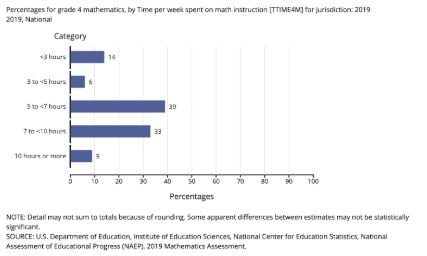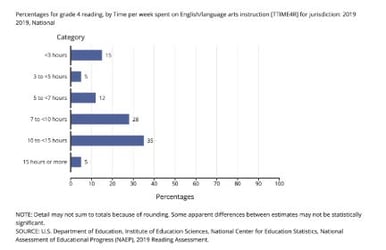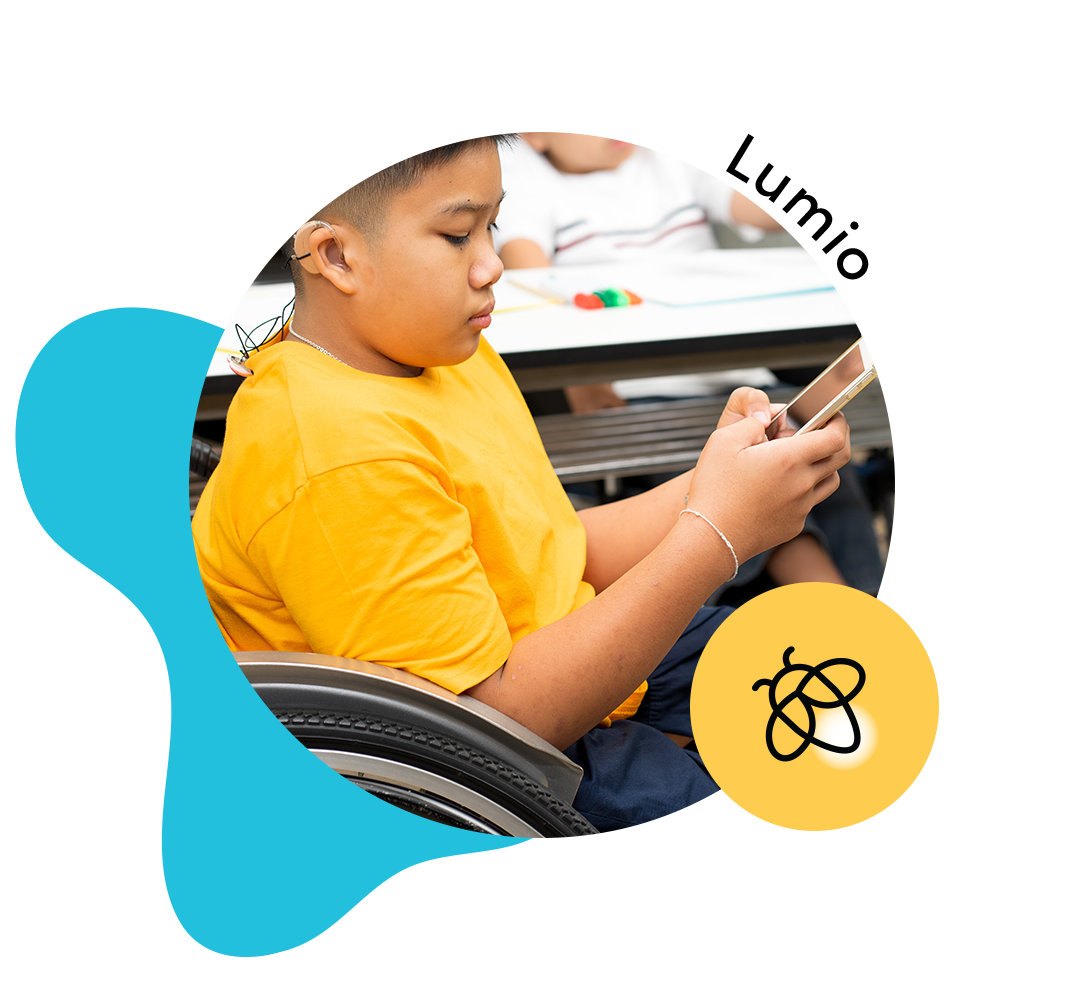Helping early learners develop better numeracy skills can have an enormous impact on their achievement and outcomes over the long term. Unfortunately, numeracy in Pre-K-3 isn’t as much of a focus as literacy, and this puts students at a disadvantage. Everyone who works with children - educators, parents, and education leaders - has an opportunity and responsibility to focus more on developing their numeracy skills.
Most teachers of younger children are comfortable with the idea that literacy plays an important role in all subject areas. When we teach science, we’re given support and encouragement in helping children learn to read, write, think and speak like scientists.
But numeracy often takes a backseat to reading in the early years. While parents and preschool teachers often reinforce literacy learning by reading together, singing, and pointing out letters and letter sounds, math exposure often begins and ends with counting.
As a result, Math is nearly absent in American preschools and pre-kindergarten classes. One study calculated that at preschools where children spend six or more hours a day, math gets an average of only 58 seconds per day. (Pellissier, 2015) Not even a full minute
Likewise, as students begin grade school, their numeracy skills are less frequently developed outside of formal math instruction. In a 2017 report, third graders spent nearly twice as much time on English Language Arts (30%) instruction than mathematics (17%).
The 2019 NAEP Reading and Mathematics Assessments show the gap between instructional time spent on reading and math among grade four classrooms. 68% of grade four students spend 7 or more hours per week on reading, while only 42% spend more than 7 hours on math.
The gap is even wider when we look at how many students get more than 10 hours' instruction per week in each area. In fourth grade classrooms across America, 40% of students spend more than 10 hours on reading, while only 9% spend more than 10 hours on math.


Why are numeracy skills important?
There is evidence that childhood mathematics skills are predictive of later learning and achievement. In recent years, analyses of data from national databases like the Early Childhood Longitudinal Study have shown that children’s mathematical knowledge at school entry is the strongest predictor of later math success and of success in other academic domains. (Raghubar & Barnes, 2016)
We also know that children who start ahead in mathematics generally stay ahead, and children who start behind generally stay behind. In one study, 70 percent of children who started and ended kindergarten below the 10th percentile in mathematics were also below the 10th percentile in 5th grade. (Morgan, Farkas and Wu, 2009).
The importance of numeracy in early childhood is clear. So how can we increase the amount of time and quality of math instruction?
Starting with the basics in pre-K
The key to addressing early numeracy across the curriculum is for teachers to understand the mathematical demands of the work that they set students, the potential difficulties students may experience, and a variety of strategies to support them. (Teacher’s Role and Quality Teaching, 2020)
A teacher might, for example, find an opportunity to teach numeracy skills through a child’s natural love of sorting. Asking them to sort their prized dinosaurs into groups, such as big and small, is the basis of a few important early math skills.
First, they can compare the groups(there are more small dinosaurs.) They can count how many are in each group (two big ones, six small ones). They can re-sort in different ways (the ones with spikes here, the ones without spikes there; arranging the dinosaurs in order from shortest to tallest). Numeracy is an intimidating word, but it simply means understanding what each number represents and the implications of number operations: What happens when you take one of the dinosaurs away?
There are many opportunities to support numeracy in an early learner’s play. Puzzles, building blocks, board games, and card games have all been studied, with researchers concluding that all of these elevate math skills. Chutes and Ladders, for example, excels at teaching numbers, says Stanford professor Deborah J. Stipek, and playing with dice teaches addition. (Pellissier, 2015)
Infusing more numeracy in elementary instruction
For teachers of children in first grade and above, the task of bringing numeracy into everyday instruction becomes more complex. What Works Clearinghouse (Frye et al., 2013) recommends that educators:
- Teach children to view and describe their world mathematically
- Help children link formal math vocabulary, symbols, and procedures to their informal knowledge or experiences.
- Use open-ended questions to prompt children to apply their math knowledge.
- Encourage children to recognize and talk about math in everyday situations.
- Dedicate time each day to teaching math, and integrate math instruction throughout the school day
- Plan daily instruction targeting specific math concepts and skills.
- Embed math in classroom routines and activities.
- Highlight math within topics of study across the curriculum.
- Create a math-rich environment where children can recognize and meaningfully apply math.
- Use games to teach math concepts and skills and to give children practice in applying them.
For many teachers, this is far easier said than done. To follow this advice, many would need more time, skills, tools and support. How can we give these to them?
In my next post, I’ll share some easy steps teachers can take, as well as tools and interactive technology they can use to bring more numeracy into everyday instruction and help students build these critical skills.
Matt has more than 20 years of experience in the education field. As a former teacher, administrator and higher education strategist, he understands the challenges teachers face in the ever-evolving world of education. Matt currently works as an efficacy and implementation consultant, supporting districts as they integrate education technology into their classrooms.








